Many coastal areas around the world are facing an immense dilemma. How do you deal with densification and increase in population in these areas considering the reality of rising sea levels? Coastal areas are however some of the most desirable places to live and work. In fact they are often attractive from a perspective of livelihood or because of its advantageous environmental conditions. It is therefore important to consider when construction activity does have to take place, it builds in resilience to an uncertain future. Moreover, it should employ building methods and use materials that have a minimal impact on their fragile ecosystems.’
The site of the Other Side Studio (the Mumbai Artist Retreat) on the other side of the Mumbai Bay is typical in that respect. Since it is relatively difficult to get to, it still has a rural, agricultural character. More so in contrast to the rest of Mumbai it still has somewhat of a shoreline to speak off. Here, the Mumbai Artist Retreat intends to become a place where artists can work in a spacious, natural environment. A place that is away from the heavy physical and psychological demands of the global metropole. However with the skyline of Mumbai across the bay, it still feels connected with the city.
The site is a low lying coconut palm plantation located near a beach. Because of a decreasing ground water table, it suffers from saline ground water in the summer months. In order to replenish the ground water table with sweet water, a waterharvesting pond in the middle of the site recharges the ground water table. In addition, the pond attracts significant amount of fish and bird life.
Across the length of the property, three zones define the programming of the site. The temporary residential zone, the workspace zone and the residential zone for long term accommodation. The program proposes a series of temporary structures to accommodate these activities.
Considering the low soil bearing capacity and occasional flooding on the site, a nimble lightweight steel structures lifts the building off the ground. In order to further reduce the disturbance of the site during construction, the construction processes employed off site manufacturing. Therefore all the joints between the various steel components are designed as nut and bolt connections. The columns rest on stone boulders sourced from another construction project in the vicinity. A steel rod anchors the columns into a chiseled depression in the basalt boulders. This method of construction offers the option to reassemble the building on higher ground if desired.
The Mumbai Artist Retreat is conceptualised as a community space. It is an art lab of sorts, that aims to bring together art, ecology and society. It will bring people from diverse backgrounds together to engage in various forms of artistic expression in a creative and critical way. Therefore the space will reflect the intention of ‘coming together’. Furthermore it aims to inspire reflection, quietude, creativeness, and belonging. A space where people can engage and immerse in nature and within themselves.
The Artist workshop is a 12m x 10m “tropical shed” with two roofs that are each six meter high. Two skylights chop off the pyramid shaped roofs on the top. By shifting the roofs away from each other asymmetrically, they define the two spaces below from an experimental perspective. A store room with screen printing equipment creates an additional loft with a workspace on top of it.
While the stilts, columns and beams are made in galvanised steel, the roof structure is built of bamboo V-shaped beams. Indian bamboo often suffers from irregular shapes and diameters. In order to avoid the natural irregularity of the bamboo from becoming distractive, the layout of the rafters follows a zig-zag pattern. However it also increases the strength of the structural frame. While the framework is exposed from the inside, on the exterior a lightweight roofing of cement sheets cover the bamboo framework.
A solar skylight on the top of the roof generates power and pulls up hot air from the space below. These solar panels are integrated in such a way that they their technological character does not overpower the design. In addition this skylight is openable and therefore encourages a natural flow of air across the workshops.
Flexibility is an important criteria for a workshop space without a fixed programming. Therefore movable wall panels can connect to each modular bay of columns, allowing the spaces to be modified. These timber slat panels keep out rain and direct sunlight where it is not desired.
Depending on the requirement, the Artists workshop can be used as a single large workshop, multiple simultaneous workshops or an exhibition space. Along with the flexible construction system and the flexible arrangement of spaces, the workshop is a future ready building that can adapt to the fluidity of artistic programming and the uncertainties of its terrain.
Project Name
The Other Side Studio – Mumbai Artist Retreat
Location
Year
2019
Type
Themes
Sustainability, Context, Bamboo Roof, Solar Energy, Typology
Status
Completed
Size
1000 sq.m.
Program
Artist Retreat
Photographer
Randhir Singh
Publications
Wallpaper October 2020 – Light Touch
The Plan 124 – Sustainability and Resilience
Architectural Digest India January 2021
Awards
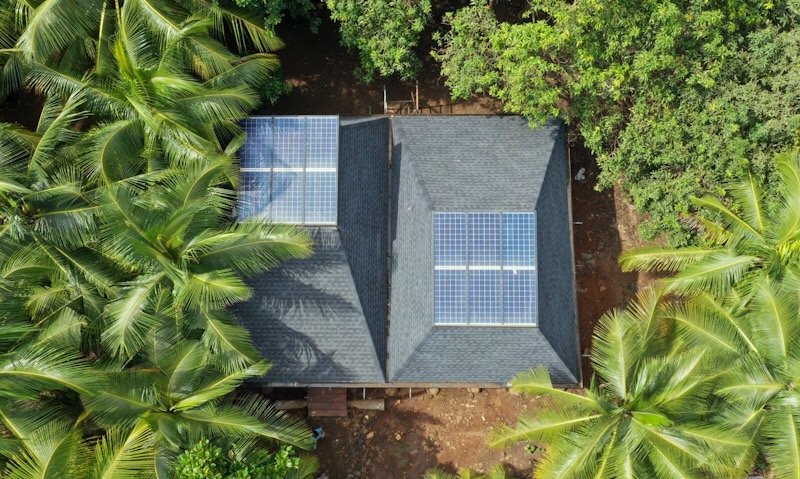





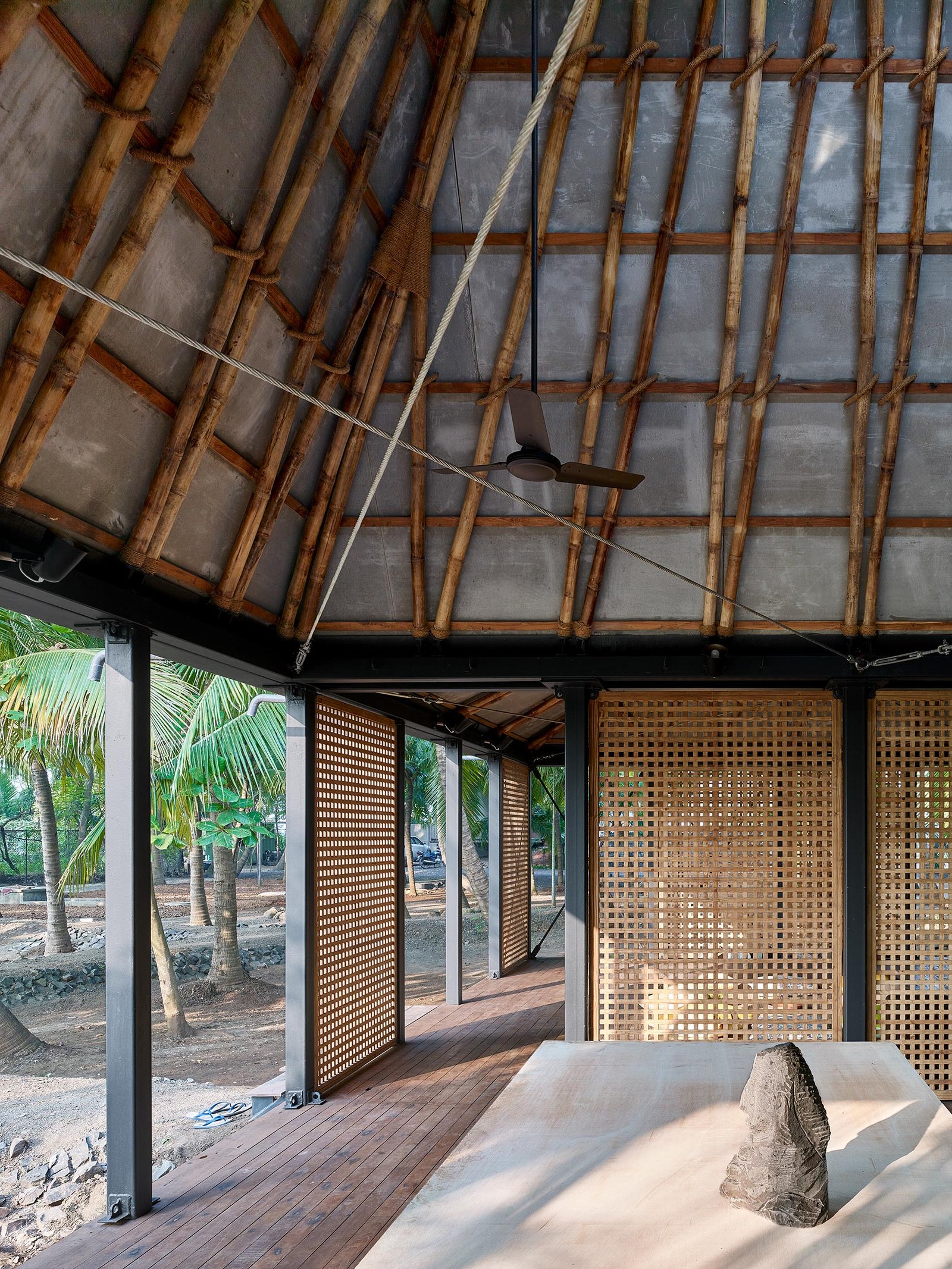

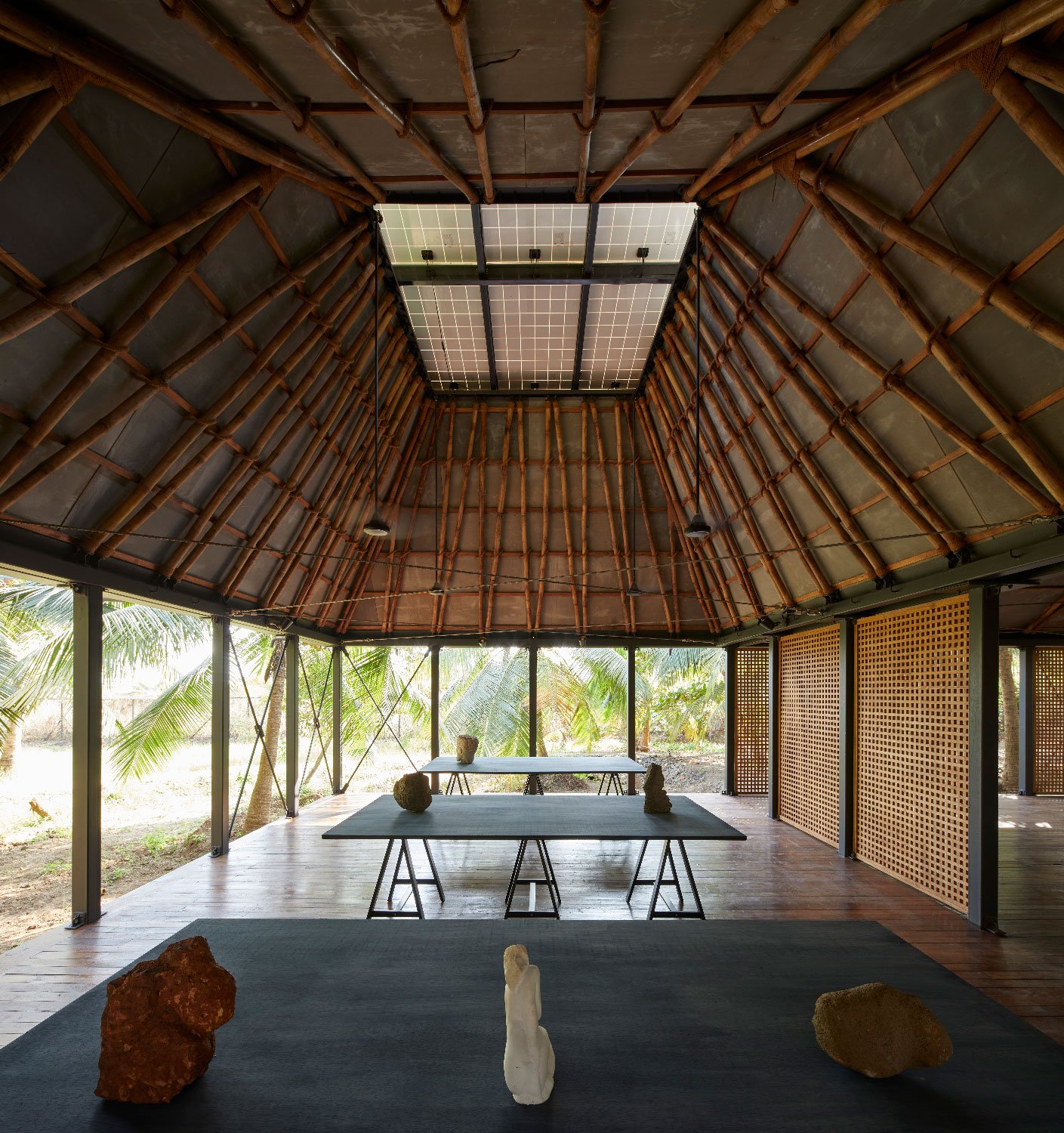




Master Plan

Master Plan, flooded site


Plan

Section AA

Section BB

Elevation
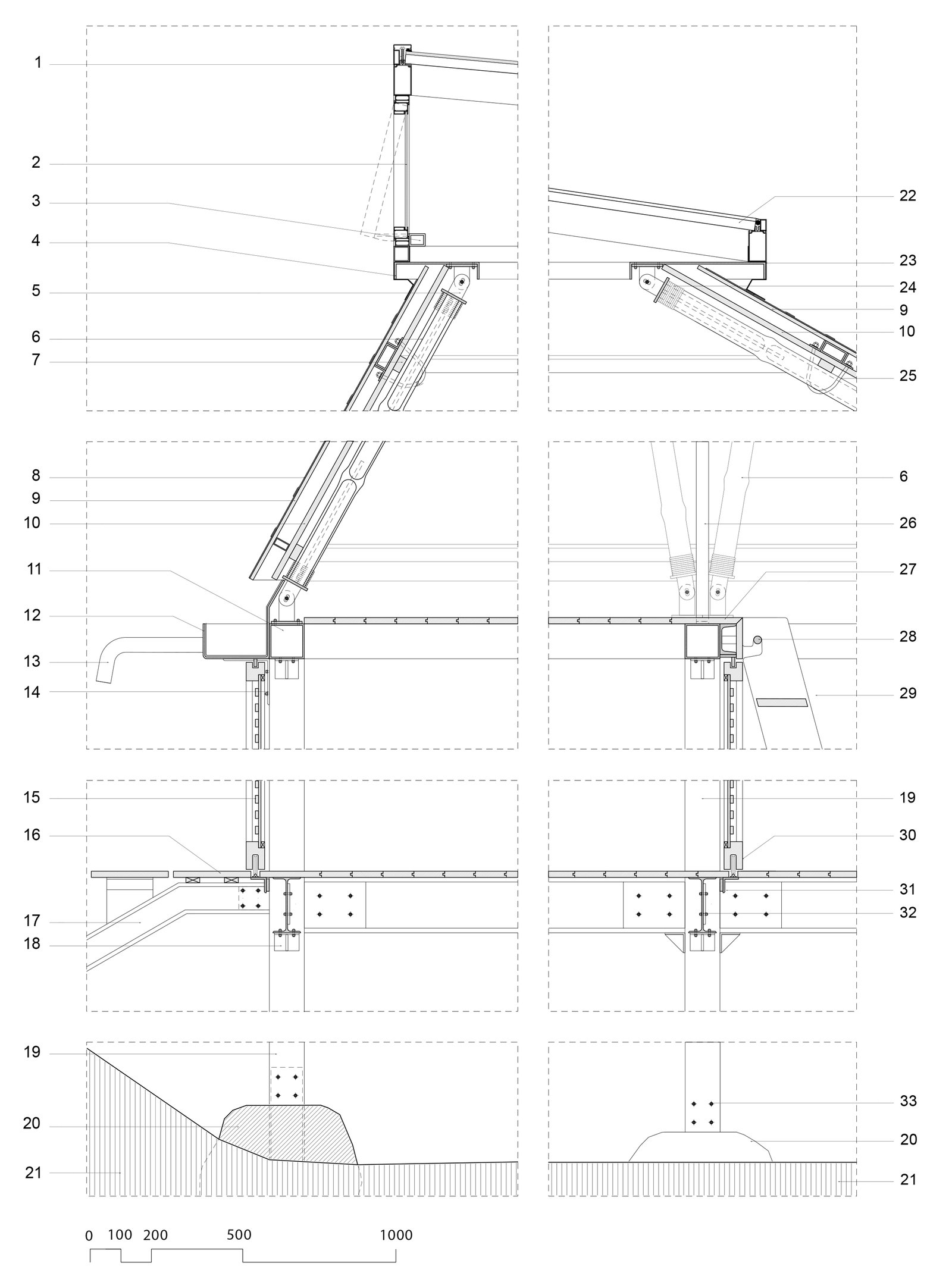
Sectional Detail
1. aluminium pressure clip for solar panel
2. openable window with aluminium frame
3. skylight operator for openable window fixed to aluminium frame
4. 6mm thk mild steel folded plate to support the skylight
5. bamboo connector with rotation in 2 directions, 10mm mild steel plate cut to profile
6. 65-75mm Ø bamboo member treated with creosote oil and cut to size
7. 50x25mm timber spacer in burma teak wood
8. 4mm thk bitumen shingles
9. 12mm thk bison board
10. 18mm thk bison board
11. 113x113x5.4mm thk galvanized mild steel beam
12. 6mm thk folded plate gutter with FRP liner
13. gutter spout in 4mm thk bent mild steel pipe
14. 150x150x6mm thk L angle cut to profile to support mild steel gutter
15. louvred sliding shutter in 60x40mm thk wooden frame and 6mm thk clear glass
16. 20mm thk reclaimed wooden floor
17. 50x50mm RHS to support steps
18. 50x50x6mm thk cleat to support beams
19. 113.5×113.5×5.4mm thk galvanized mild steel columns
20. basalt stone boulders
21. compressed earth
22. 1640x990mm solar panels supported on skylight frame
23. aluminium flashing bent to profile
24. 6mm thk jute rope tied around bamboo member
25. 10mm thk tie rod wrapped with jute rope
26. loft railing :6mm thk Mild steel flat members with 10mm dia mild steel rod
27. loft flooring: 20mm thk reclaimed wood
28. 25mm Ø mild steel bent rod to support ladder
29. wooden ladder with 30mm thk wooden sections
30. 60x40mm wooden sliding door bottom frame with bottom roller channel
31. 65x65x5mm galvanized mild steel L angle to support bottom sliding channel
32. galvanized ISMB 200 bolted to mild steel columns
33. mild steel bolts of 6mm Ø
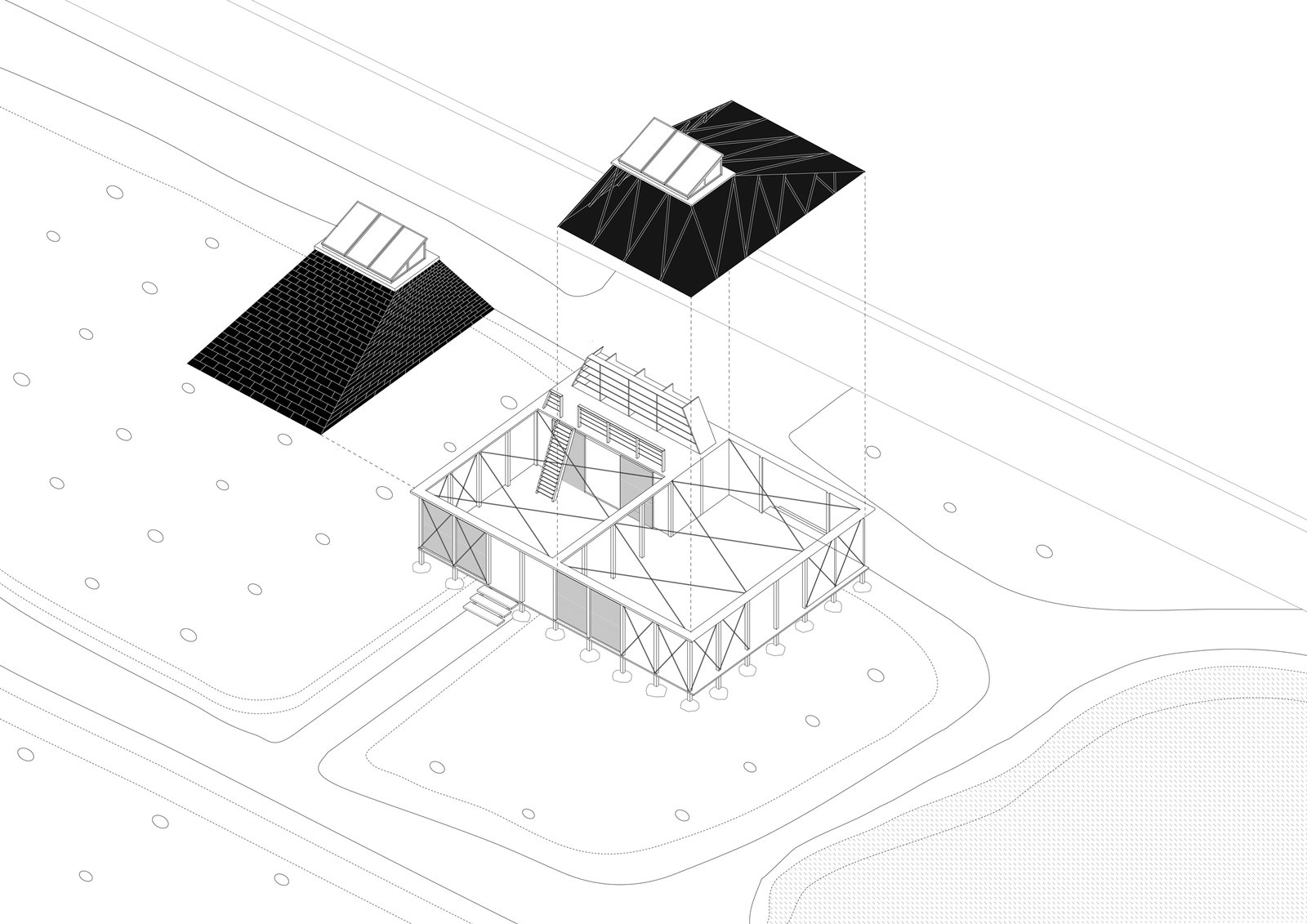
Exploded Axonometric

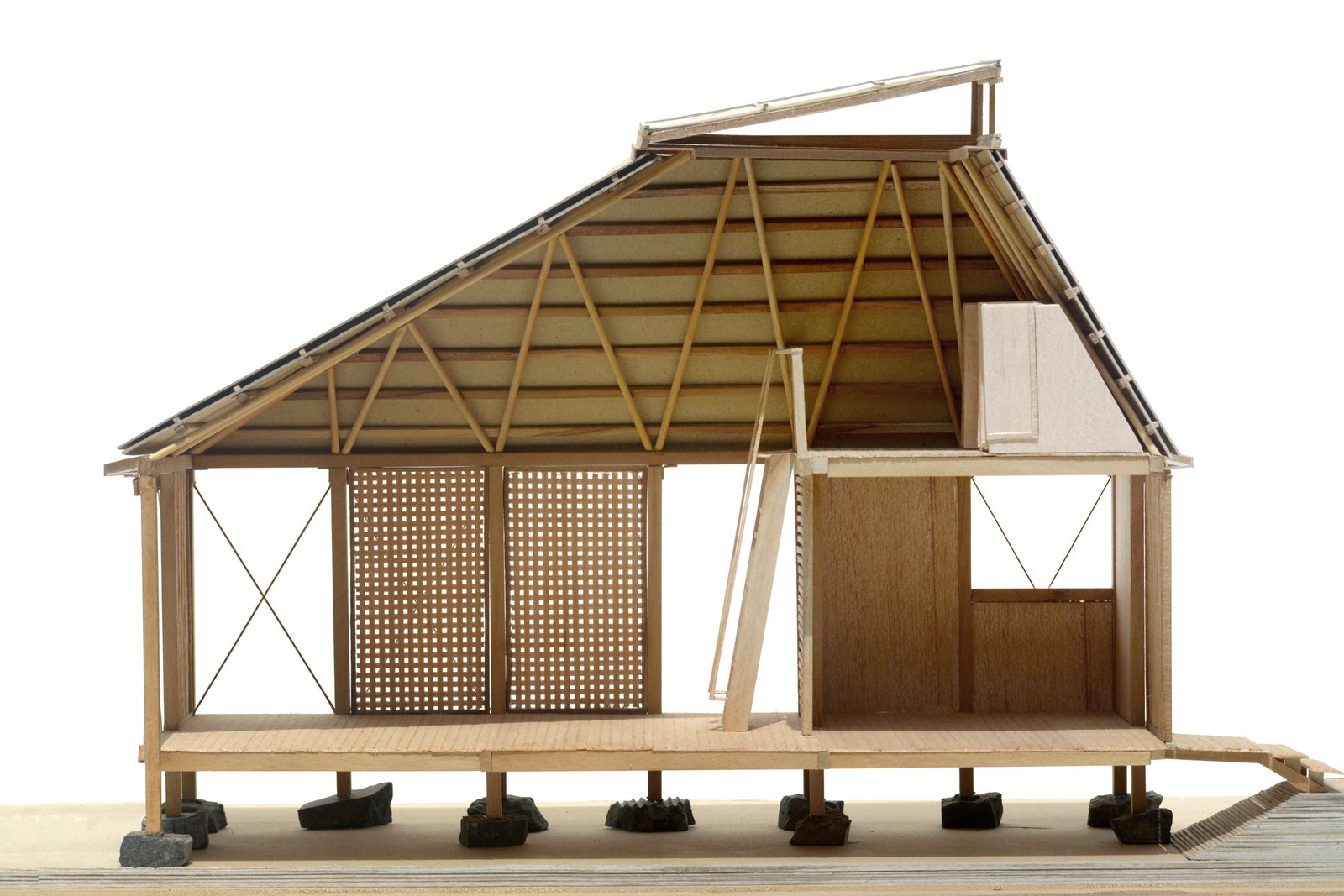
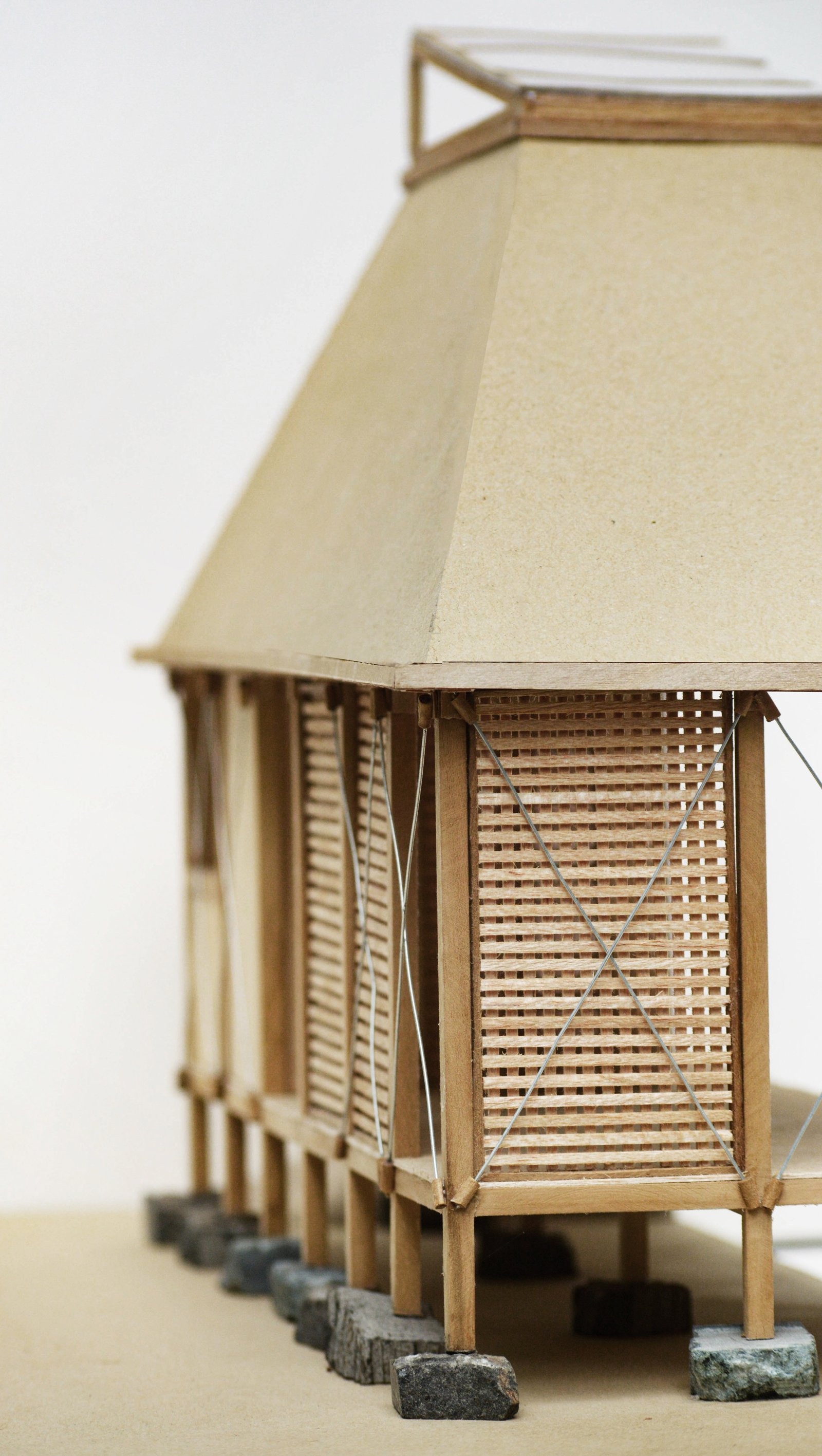
Sectional model
